 |
For the first time, Alice Yalcin Efe is scared of AI as a music producer.
A professional music producer, been number one on BeatPort, has millions of streams on Spotify, played in big festivals and clubs, "yet for the first time I am scared of AI as a music producer."
When you're homeless, you can listen to AI mix the beat on the beach.
After that, she ponders what this means for all the rest of us. Those of us who aren't professional music producers. Well, I guess we can all be music producers now.
"Music on demand becomes literal. You feel heartbroken, type it in. Type in the genres that you want. Type in the lyrics that you want. Type in the mood that you want and then AI spits out the perfect ballad for you to listen."
"I think it's both incredible and horrifying at the same time. I honestly don't know what comes next. Will this kill the artists' soul, or will it give us just more tools to make even greater things?" |
|
 |
Musician Paul Folia freaks out over Suno and Udio (and other music AI). Reminds me of the freak-out of visual artists a year ago. It appears AI is going to replace humans one occupation at a time and people will freak out when it's their turn. He estimates in a year AI music will be of high enough quality to wipe out stock music writing completely, producing tracks for a price no human can compete with ($0.02 and in minutes).
He experiments with various music styles an artists' styles and the part that impressed me the most was, perhaps surprisingly, the baroque music. After noting that the training data was probably easy to get because it's public domain, he says, "This m-f-er learned some *serious* harmony. Not like three chords and some singing." |
|
 |
"For those who don't yet know from their other social media: a week ago the cryptographer Yilei Chen posted a preprint, eprint.iacr.org/2024/555, claiming to give a polynomial-time quantum algorithm to solve lattice problems. For example, it claims to solve the GapSVP problem, which asks to approximate the length of the shortest nonzero vector in a given n-dimensional lattice, to within an approximation ratio of ~n4.5. The best approximation ratio previously known to be achievable in classical or quantum polynomial time was exponential in n."
"If it's correct, this is an extremely big deal. It doesn't quite break the main lattice-based cryptosystems, but it would put those cryptosystems into a precarious position, vulnerable to a mere further polynomial improvement in the approximation factor. And, as we learned from the recent NIST competition, if the lattice-based and LWE-based systems were to fall, then we really don't have many great candidates left for post-quantum public-key cryptography! On top of that, a full quantum break of LWE (which, again, Chen is not claiming) would lay waste (in a world with scalable QCs, of course) to a large fraction of the beautiful sandcastles that classical and quantum cryptographers have built up over the last couple decades--everything from Fully Homomorphic Encryption schemes, to Mahadev's protocol for proving the output of any quantum computation to a classical skeptic."
Wow, that's quite a lot. Let's see if we can figure out what's going on here.
First of all, I hadn't heard of these "lattice" problems, but doing some digging, I found they've been of great interest to people working on quantum computers, because they're thought to be resistant to attacks from quatum computers. Quantum computers have this magical ability to use the superposition of wavefunctions to test "all combinations at once" for a mathematical problem, which could be finding a key that decrypts an encrypted message. This magical ability is harder to tap into than it sounds because, first of all, you need enough qubits (quantum bits -- the superposition bits that quantum computers use instead of the regular 0 or 1 bits of regular computers), and that's really hard because all the qubits have to be entangled, and maintaining a boatload of entangled qubits usually involves freezing atoms to near absolute zero and other such difficult things. And second of all, you have to find an algorithm -- quantum computers are not straightforward to program, and can only "run" "programs" written specifically for quantum computers, with algorithms that have been invented to solve a particular mathematical problem using quantum physics.
What supposedly makes "lattice" problems harder to solve than RSA, Elliptic Curve Cryptography, and so on, is that with lattices, you can have any number of dimensions. This increase in dimensionality cranks up the number of qubits required much faster than traditional algorithms such as RSA, Elliptic Curve Cryptography, and so on. So they stand a much better chance of outpacing the advancement of quantum computers. Also, nobody has ever come up with an algorithm for cracking lattice problems...
...until now, maybe. That's what this post is about. Possibly this Yilei Chen cryptographer has found an algorithm. The specific encryption algorithm that he may have found a way to crack with a quantum computer algorithm is called GapSVP. SVP stands for "shortest vector problem" and clicking through on the link will take you to a Wikipedia page that explains the mathematics behind it. However if you scroll down in the original post you'll see there is discussion of a bug in cryptographer Yilei Chen's algorithm. It is not known whether the algorithm can be fixed or whether this means GapSVP and LWE remain unbroken.
Speaking of LWE, the post also mentions LWE without giving a clue what "LWE" means. LWE stands for "Learning With Errors". In fact if you clicked through on GapSVP to the Wikipedia page, you can find a handy link to the Learning With Errors page at the bottom in the "See also" section. With LWE, you have an n-dimensional "ring" of integers -- called a "ring" instead of a "vector" because they are all modulo some prime number (remember we make this hard by making the number of dimensions and the size of the prime number huge) -- which you run through some secret linear transformation function and then perturb with some error, perhaps drawn from a Gaussian distribution. To crack the system you have to recover the secret linear transformation function. Mathematicians have proven LWE is equivalent to lattice problems and therefore is a lattice problem.
The mention of Mahadev's protocol, which you can find out all about by clicking through on that link, refers to a method of verifying that a quantum algorithm works using a classical computer. The protocol works by forcing the qubits into states that are predetermined ahead of time, and then verifying those states are achieved. Of course a classical computer cannot verify the output of a quantum computer for any given input. |
|
 |
"AI is now dogfighting with fighter pilots in the air."
Well, that headline makes it sound like dogfighting exercises between human pilots and AI-piloted aircraft are happening now, but the article actually says, in a longwinded way, that this has been authorized and is something that should be happening soon. The AI-piloted aircraft is the X-62A, a modified two-seat F-16D that was tested last year.
"The machine learning approach relies on analyzing historical data to make informed decisions for both present and future situations, often discovering insights that are imperceptible to humans or challenging to express through conventional rule-based languages. Machine learning is extraordinarily powerful in environments and situations where conditions fluctuate dynamically making it difficult to establish clear and robust rules."
"Enabling a pilot-optional aircraft like the X-62A to dogfight against a real human opponent who is making unknowable independent decisions is exactly the 'environments and situations' being referred to here. Mock engagements like this can be very dangerous even for the most highly trained pilots given their unpredictability."
"Trust in the ACE algorithms is set to be put to a significant test later this year when Secretary of the Air Force Frank Kendall gets into the cockpit for a test flight."
"I'm going to take a ride in an autonomously flown F-16 later this year. There will be a pilot with me who will just be watching, as I will be, as the autonomous technology works, and hopefully, neither he nor I will be needed to fly the airplane."
ACE stands for "Air Combat Evolution". It's a Defense Advanced Research Projects Agency (DARPA) program.
Article has lots of links to more information on AI in fighter jets. |
|
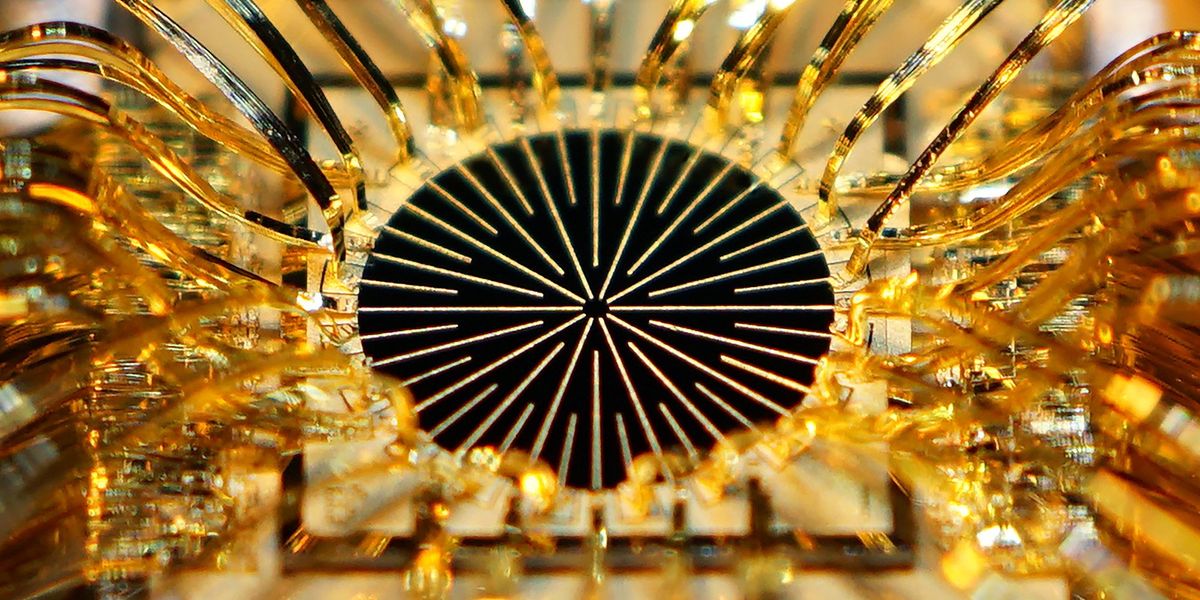 |
"The tiny ultrabright laser that can melt steel".
Allegedly in 2016, the Japanese government announced a plan for Society 5.0. If you're wondering what the first 4 were, they were 1: hunter/gatheres, 2: agrarian, 3: industrial, 4: the information age -- the end of which is fast approaching! Bringing us to Society 5: on-demand physical products. (Also robot caretakers, but never mind that -- you need lasers for on-demand physical products!)
"The lasers of Society 5.0 will need to meet several criteria. They must be small enough to fit inside everyday devices. They must be low-cost so that the average metalworker or car buyer can afford them -- which means they must also be simple to manufacture and use energy efficiently. And because this dawning era will be about mass customization (rather than mass production), they must be highly controllable and adaptive."
"Semiconductor lasers would seem the perfect candidates, except for one fatal flaw: They are much too dim."
"Of course, other types of lasers can produce ultrabright beams. Carbon dioxide and fiber lasers, for instance, dominate the market for industrial applications. But compared to speck-size semiconductor lasers, they are enormous. A high-power CO2 laser can be as large as a refrigerator. They are also more expensive, less energy efficient, and harder to control."
"Over the past couple of decades, our team at Kyoto University has been developing a new type of semiconductor laser that blows through the brightness ceiling of its conventional cousins. We call it the photonic-crystal surface-emitting laser, or PCSEL (pronounced 'pick-cell'). Most recently, we fabricated a PCSEL that can be as bright as gas and fiber lasers -- bright enough to quickly slice through steel -- and proposed a design for one that is 10 to 100 times as bright. Such devices could revolutionize the manufacturing and automotive industries. If we, our collaborating companies, and research groups around the world can push PCSEL brightness further still, it would even open the door to exotic applications like inertial-confinement nuclear fusion and light propulsion for spaceflight."
That paragraph doesn't mention the size. 3 mm. As in, 3 millimeters. A lot smaller than a refrigerator.
The rest of the article describes -- pretty decently for lay people -- how these PCSEL lasers work.
"At certain wavelengths determined by the groove spacing, light refracts through and partially reflects off each interface. The overlapping reflections combine to form a standing wave that does not travel through the crystal."
"In a square lattice such as that used in PCSELs, air holes bend light backward and sideways. The combination of multiple such diffractions creates a 2D standing wave. In a PCSEL, only this wave is amplified in the active layer, creating a laser beam of a single wavelength." |
|
 |
Sheets of gold that are one atom thick have been synthesized.
They're calling it "goldene", to make you think of "graphene," "the iconic atom-thin material made of carbon that was discovered in 2004."
"Since then, scientists have identified hundreds more of these 2D materials. But it has been particularly difficult to produce 2D sheets of metals, because their atoms have always tended to cluster together to make nanoparticles instead."
"Researchers have previously reported single-atom-thick layers of tin and lead stuck to various substances, and they have produced gold sheets sandwiched between other materials. But 'we submit that goldene is the first free-standing 2D metal, to the best of our knowledge', says materials scientist Lars Hultman at Linköping University in Sweden."
"The Linköping researchers started with a material containing atomic monolayers of silicon sandwiched between titanium carbide. When they added gold on top of this sandwich, it diffused into the structure and exchanged places with the silicon to create a trapped atom-thick layer of gold. They then etched away the titanium carbide to release free-standing goldene sheets that were up to 100 nanometres wide, and roughly 400 times as thin as the thinnest commercial gold leaf."
"That etching process used a solution of alkaline potassium ferricyanide known as Murukami's reagent. 'What's so fascinating is that it's a 100-year-old recipe used by Japanese smiths to decorate ironwork,' Hultman says. The researchers also added surfactant molecules -- compounds that formed a protective barrier between goldene and the surrounding liquid -- to stop the sheets from sticking together."
"Light can generate waves in the sea of electrons at a gold nanoparticle's surface, which can channel and concentrate that energy. This strong response to light has been harnessed in gold photocatalysts to split water to produce hydrogen, for instance. Goldene could open up opportunities in areas such as this, Hultman says, but its properties need to be investigated in more detail first." |
|
 |
Injection molding vs 3D printing. A 2-cavity tool injection molding machine competes with 4 Form 4 3D printers in a race to make 1,000 parts, which are simple plastic latches. If it sounds a bit unfair that 1 injection molding machine goes up against 4 3D printers, they show the 3D printers cost less and take up less floor space. The also require less lead time, as in, not any, vs weeks for the injection molding machine.
See below for keynote address explaining more of how the Form 4 3D printers work. |
|
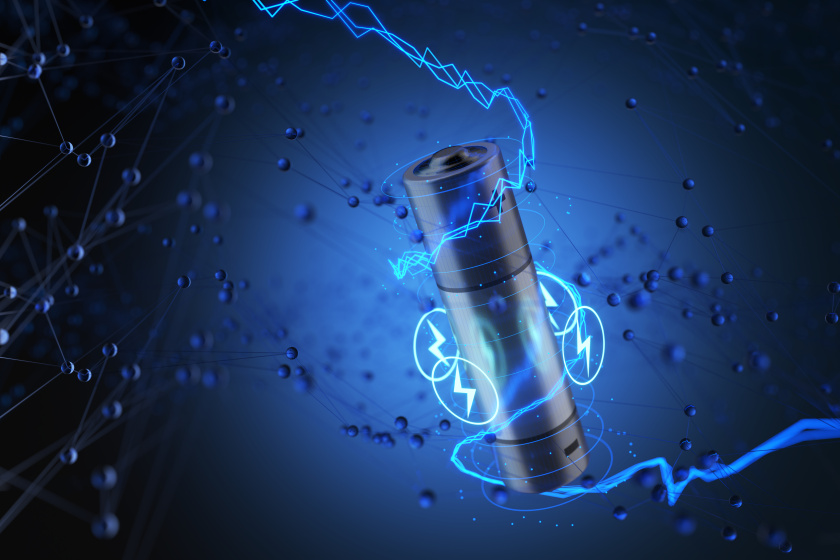 |
Pulsed charging enhances the service life of lithium-ion batteries.
"Lithium-ion batteries are powerful, and they are used everywhere, from electric vehicles to electronic devices. However, their capacity gradually decreases over the course of hundreds of charging cycles. The best commercial lithium-ion batteries with electrodes made of so-called NMC532 and graphite have a service life of up to eight years. Batteries are usually charged with a constant current flow. But is this really the most favourable method? A new study by Prof Philipp Adelhelm's group at Helmholtz-Zentrum Berlin and Humboldt-University Berlin answers this question clearly with no."
I skipped the chemical formula for NMC532 but it's in the article. Basically a lithium, nickel, manganese, cobalt compound.
"Part of the battery tests were carried out at Aalborg University. The batteries were either charged conventionally with constant current or with a new charging protocol with pulsed current. Post-mortem analyses revealed clear differences after several charging cycles: In the constant current samples, the solid electrolyte interface at the anode was significantly thicker, which impaired the capacity. The team also found more cracks in the structure of the NMC532 and graphite electrodes, which also contributed to the loss of capacity. In contrast, pulsed current-charging led to a thinner solid electrolyte interface and fewer structural changes in the electrode materials."
"Helmholtz-Zentrum Berlin researcher Dr Yaolin Xu then led the investigation into the lithium-ion cells at Humboldt University and BESSY II with operando Raman spectroscopy and dilatometry as well as X-ray absorption spectroscopy to analyse what happens during charging with different protocols. Supplementary experiments were carried out at the PETRA III synchrotron. 'The pulsed current charging promotes the homogeneous distribution of the lithium ions in the graphite and thus reduces the mechanical stress and cracking of the graphite particles. This improves the structural stability of the graphite anode,' he concludes. The pulsed charging also suppresses the structural changes of NMC532 cathode materials with less Ni-O bond length variation."
BESSY stands for "Berliner Elektronenspeicherring-Gesellschaft für Synchrotronstrahlung". In English, "Berlin Electron Storage Ring Society for Synchrotron Radiation". Which would be BESRSSR. Never mind. Yes, "Electron Storage Ring" got all smashed together into "Elektronenspeicherring" in the German. "Society" seems like an odd part of the name in English. "Gesellschaft" can be translated "society" but could also be "company". Maybe "organization" would be a better word. Synchrotron radiation is a type of radiation emitted in particle accelerators when charged particles are pushed into going in circles or curved trajectories instead of being allowed to go in straight lines like they want to, and apparently requires "relativistic" speeds, which I take to mean, charged particles near the speed of light.
Raman spectroscopy is a type of spectroscopy where, I'm not sure exactly how it works. You transmit a fixed wavelength of light but the vibrations of the molecules nudge the energy levels up or down such that the molecules will or won't absorb and re-emit ("scatter") the photons. Not sure how the word "dilatometry" fits into all this. "Dilatometry" just means the measurement of the amount of volume a material takes up.
PETRA III is a particle accelerator in Hamburg run by DESY, the German government's national organization for fundamental physics research. DESY stands for "Deutsches Elektronen-Synchrotron" and PETRA stands for "Positron-Electron Tandem Ring Accelerator" (apparently doesn't have both German and English versions?).
All in all, a pretty sophisticated amount of analysis of battery recharging.
Still, the optimal frequency is not known. |
|
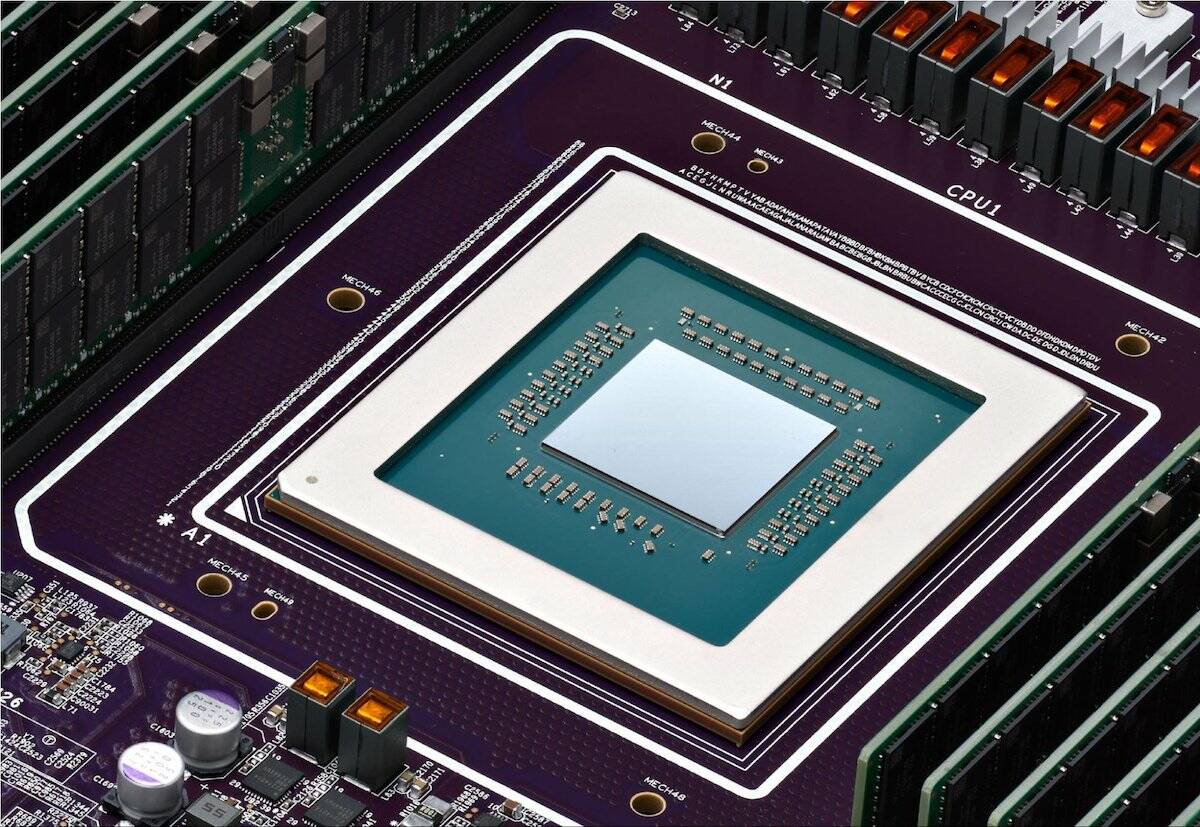 |
"Google joins the custom server CPU crowd with Arm-based Axion chips."
"Google is the latest US cloud provider to roll its own CPUs. In fact, it's rather late to the party. Amazon's Graviton processors, which made their debut at re:Invent in 2018, are now on their fourth generation. Meanwhile, Microsoft revealed its own Arm chip, dubbed the Cobalt 100, last fall."
"The search giant has a history of building custom silicon going back to 2015. However, up to this point most of its focus has been on developing faster and more capable Tensor Processing Units (TPUs) to accelerate its internal machine learning workloads." |
|
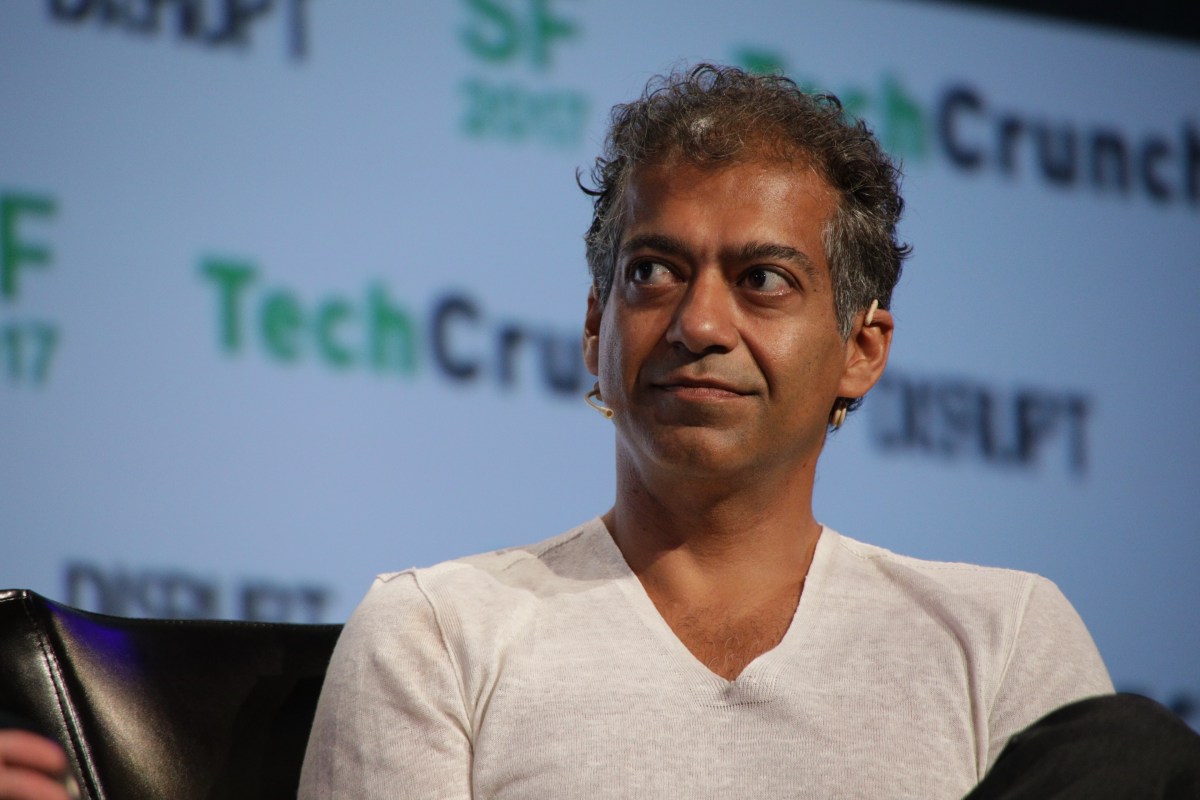 |
"Airchat is a new social media app that encourages users to 'just talk.'" "Visually, Airchat should feel pretty familiar and intuitive, with the ability to follow other users, scroll through a feed of posts, then reply to, like, and share those posts. The difference is that the posts and replies are audio recordings, which the app then transcribes."
What do y'all think? You want an audio social networking app? |
|
 |
"One of the most common concerns about AI is the risk that it takes a meaningful portion of jobs that humans currently do, leading to major economic dislocation. Often these headlines come out of economic studies that look at various job functions and estimate the impact that AI could have on these roles, and then extrapolates the resulting labor impact. What these reports generally get wrong is the analysis is done in a vacuum, explicitly ignoring the decisions that companies actually make when presented with productivity gains introduced by a new technology -- especially given the competitive nature of most industries."
Says Aaron Levie, CEO of Box, a company that makes large-enterprise cloud file sharing and collaboration software.
"Imagine you're a software company that can afford to employee 10 engineers based on your current revenue. By default, those 10 engineers produce a certain amount of output of product that you then sell to customers. If you're like almost any company on the planet, the list of things your customers want from your product far exceeds your ability to deliver those features any time soon with those 10 engineers. But the challenge, again, is that you can only afford those 10 engineers at today's revenue level. So, you decide to implement AI, and the absolute best case scenario happens: each engineer becomes magically 50% more productive. Overnight, you now have the equivalent of 15 engineers working in your company, for the previous cost of 10."
"Finally, you can now build the next set of things on your product roadmap that your customers have been asking for."
Read the comments, too. There is some interesting discussion, uncommon for Twitter, apparently made possible by the fact that not just Aaron Levie but some other people forked over money to Twitter to be able to post things larger than some arbitrary and super-tiny character limit. |
|
 |
"Evaluate LLMs in real time with Street Fighter III"
"A new kind of benchmark? Street Fighter III assesses the ability of LLMs to understand their environment and take actions based on a specific context. As opposed to RL models, which blindly take actions based on the reward function, LLMs are fully aware of the context and act accordingly."
"Each player is controlled by an LLM. We send to the LLM a text description of the screen. The LLM decide on the next moves its character will make. The next moves depends on its previous moves, the moves of its opponents, its power and health bars."
"Fast: It is a real time game, fast decisions are key"
"Smart: A good fighter thinks 50 moves ahead"
"Out of the box thinking: Outsmart your opponent with unexpected moves"
"Adaptable: Learn from your mistakes and adapt your strategy"
"Resilient: Keep your RPS high for an entire game"
Um... Alrighty then... |
|
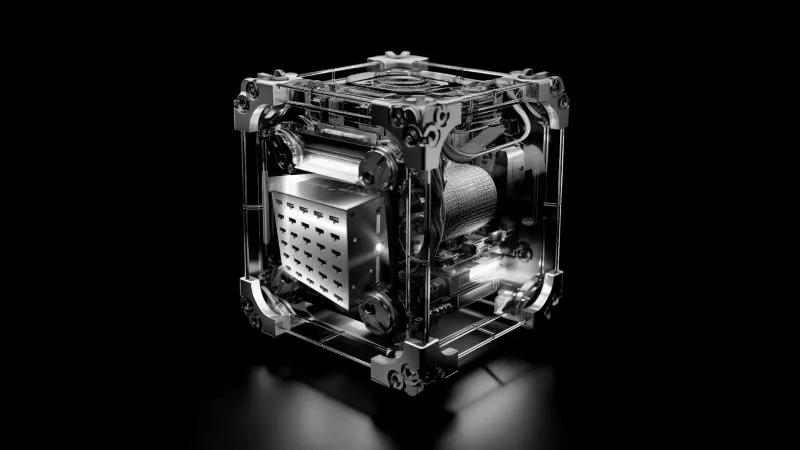 |
"US-based startup RocketStar has successfully demonstrated an electric propulsion unit for spacecraft that uses nuclear fusion-enhanced pulsed plasma."
"By introducing boron into the thruster's exhaust, high-speed protons generated from ionized water vapor collide with boron nuclei, triggering a fusion reaction that significantly boosts the thruster's performance. This fusion process, like an afterburner in a jet engine, transforms boron into high-energy carbon, which rapidly decays into three alpha particles. The result? A remarkable 50% improvement in thrust compared to our FireStar Foundation thruster."
"This discovery, initially made under an SBIR from AFWERX, has been independently validated. We've witnessed fusion reactions occur in our lab and the result is a 50% jump in thrust performance. 'RocketStar has not just incrementally improved a propulsion system, but taken a leap forward by applying a novel concept, creating a fusion-fission reaction in the exhaust! This is an exciting time in technology developments and I am looking forward to their future innovations,' stated Adam Hecht, Professor of Nuclear Engineering, University of New Mexico."
"The FireStar Foundation thruster is ready to ship now. It will fly in July and October 2024 on D-Orbit's proprietary OTV ION Satellite Carrier riding on two SpaceX Transporter missions, proving performance in the ultimate test -- space itself. But get ready, because our FireStar Fusion Drive is headed to the launchpad too, scheduled for in-space testing in February 2025 on Rogue Space System's Barry-2 spacecraft."
From what I've been able to figure out, and for those of you who like things expressed in equations (don't worry, for those of you scared by equations I'll describe it in words as well), what they're claiming looks like:
proton + 11B -> 12C* -> 3 4He + boatload of energy
Boron by definition has 5 protons, add 6 neutrons and we get the 11 isotope of boron. Hit it with a proton and that makes it 6 protons, which makes it carbon by definition. The asterisk indicates the carbon is in an "excited state", which means it has excess energy. It sheds this excess energy by splitting into 3 "alpha particles", also known as 3 helium nuclei (2 protons, 2 neutrons, without the orbiting electrons -- the "4" indicates the 4 isotope). The "boatload of energy" term of the equation increases the velocity of the thrust and cranks up the acceleration that the engine imparts to the spacecraft and the efficiency of the engine.
They say, "This discovery, initially made under an SBIR from AFWERX, has been independently validated."
SBIR stands for Small Business Innovation Research, a US government funding program, and AFWERX is an agency within the US Air Force for tapping into innovations from startups in the US economy. They say:
"As the innovation arm of the Department of the Air Force and powered by the Air Force Research Laboratory (AFRL), AFWERX brings cutting edge American ingenuity from small businesses and start-ups to address the most pressing challenges of the Department of the Air Force."
Link to their website below. I wasn't able to find any record of this on their website, but that could be because I don't know how to properly search the website. |
|
 |
The Global Firepower 2024 Military Strength Ranking. I never heard of the Global Firepower Military Strength Ranking before. They say:
"The finalized Global Firepower ranking below utilizes over 60 individual factors to determine a given nation's PowerIndex ('PwrIndx') score with categories ranging from quantity of military units and financial standing to logistical capabilities and geography."
"Our unique, in-house formula allows for smaller, more technologically-advanced, nations to compete with larger, lesser-developed powers and special modifiers, in the form of bonuses and penalties, are applied to further refine the list which is compiled annually. Color arrows (Green, Gray, and Red) indicate the year-over-year trend comparison (Up, Stable, Down)."
"For the 2024 GFP review, a total of 145 world powers are considered."
"Note: A perfect PwrIndx score is 0.0000 which is realistically unattainable in the scope of the current GFP formula; as such, the smaller the PwrIndx value, the more 'powerful' a nation's conventional fighting capability is."
Apparently with these "PwrIndx" scores, lower is better for some reason. The United States has a score of 0.0699, while Bhutan has 6.3704. According to this ranking, if Moldova (4.2311) went to war against Bhutan (6.3704), Moldova would win.
The first three countries are the US, Russia, and China, all nearly tied with scores near 0.07. Make of that what you will. Ukraine is number 18, above Germany. |
|
 |
| Creating sexually explicit deepfakes to become a criminal offence in the UK. If the images or videos were never intended to be shared, under the new legislation, the person will face a criminal record and unlimited fine. If the images are shared, they face jail time. |
|
 |
The 2024 AI Index Report from Stanford's Human-Centered Artificial Intelligence lab.
It says between 2010 and 2022, the number of AI research papers per year nearly tripled, from 88,000 to 240,000. So if you're wondering why I'm always behind in my reading of AI research papers, well, there's your answer.
Besides that, I'm just going to quote from the highlights in the report itself, because it seems I can't improve on them, at least not in short order and I've decided I'd like to get this report out to you all quickly. I'll continue browsing through the charts & graphs in all the chapters, but for now I'll just give you their highlights and you can decide if you want to download the report and read it or part of it more thoroughly.
"Chapter 1: Research and Development"
"1. Industry continues to dominate frontier AI research. In 2023, industry produced 51 notable machine learning models, while academia contributed only 15. There were also 21 notable models resulting from industry-academia collaborations in 2023, a new high."
"2. More foundation models and more open foundation models. In 2023, a total of 149 foundation models were released, more than double the amount released in 2022. Of these newly released models, 65.7% were open-source, compared to only 44.4% in 2022 and 33.3% in 2021."
"3. Frontier models get way more expensive. According to AI Index estimates, the training costs of state-of-the-art AI models have reached unprecedented levels. For example, OpenAI's GPT-4 used an estimated $78 million worth of compute to train, while Google's Gemini Ultra cost $191 million for compute."
"4. The United States leads China, the EU, and the UK as the leading source of top AI models. In 2023, 61 notable AI models originated from US-based institutions, far outpacing the European Union's 21 and China's 15."
"5. The number of AI patents skyrockets. From 2021 to 2022, AI patent grants worldwide increased sharply by 62.7%. Since 2010, the number of granted AI patents has increased more than 31 times."
"6. China dominates AI patents. In 2022, China led global AI patent origins with 61.1%, significantly outpacing the United States, which accounted for 20.9% of AI patent origins. Since 2010, the US share of AI patents has decreased from 54.1%."
"7. Open-source AI research explodes. Since 2011, the number of AI-related projects on GitHub has seen a consistent increase, growing from 845 in 2011 to approximately 1.8 million in 2023. Notably, there was a sharp 59.3% rise in the total number of GitHub AI projects in 2023 alone. The total number of stars for AI-related projects on GitHub also significantly increased in 2023, more than tripling from 4.0 million in 2022 to 12.2 million."
"8. The number of AI publications continues to rise. Between 2010 and 2022, the total number of AI publications nearly tripled, rising from approximately 88,000 in 2010 to more than 240,000 in 2022. The increase over the last year was a modest 1.1%."
"Chapter 2: Technical Performance"
"1. AI beats humans on some tasks, but not on all. AI has surpassed human performance on several benchmarks, including some in image classification, visual reasoning, and English understanding. Yet it trails behind on more complex tasks like competition-level mathematics, visual commonsense reasoning and planning."
"2. Here comes multimodal AI. Traditionally AI systems have been limited in scope, with language models excelling in text comprehension but faltering in image processing, and vice versa. However, recent advancements have led to the development of strong multimodal models, such as Google's Gemini and OpenAI's GPT-4. These models demonstrate flexibility and are capable of handling images and text and, in some instances, can even process audio."
"3. Harder benchmarks emerge. AI models have reached performance saturation on established benchmarks such as ImageNet, SQuAD, and SuperGLUE, prompting researchers to develop more challenging ones. In 2023, several challenging new benchmarks emerged, including SWE-bench for coding, HEIM for image generation, MMMU for general reasoning, MoCa for moral reasoning, AgentBench for agent-based behavior, and HaluEval for hallucinations."
"4. Better AI means better data which means ... even better AI. New AI models such as SegmentAnything and Skoltech are being used to generate specialized data for tasks like image segmentation and 3D reconstruction. Data is vital for AI technical improvements. The use of AI to create more data enhances current capabilities and paves the way for future algorithmic improvements, especially on harder tasks."
"5. Human evaluation is in. With generative models producing high-quality text, images, and more, benchmarking has slowly started shifting toward incorporating human evaluations like the Chatbot Arena Leaderboard rather than computerized rankings like ImageNet or SQuAD. Public sentiment about AI is becoming an increasingly important consideration in tracking AI progress."
"6. Thanks to LLMs, robots have become more flexible. The fusion of language modeling with robotics has given rise to more flexible robotic systems like PaLM-E and RT-2. Beyond their improved robotic capabilities, these models can ask questions, which marks a significant step toward robots that can interact more effectively with the real world."
"7. More technical research in agentic AI. Creating AI agents, systems capable of autonomous operation in specific environments, has long challenged computer scientists. However, emerging research suggests that the performance of autonomous AI agents is improving. Current agents can now master complex games like Minecraft and effectively tackle real-world tasks, such as online shopping and research assistance."
"8. Closed LLMs significantly outperform open ones. On 10 select AI benchmarks, closed models outperformed open ones, with a median performance advantage of 24.2%. Differences in the performance of closed and open models carry important implications for AI policy debates."
"Chapter 3: Responsible AI"
"1. Robust and standardized evaluations for LLM responsibility are seriously lacking. New research from the AI Index reveals a significant lack of standardization in responsible AI reporting. Leading developers, including OpenAI, Google, and Anthropic, primarily test their models against different responsible AI benchmarks. This practice complicates efforts to systematically compare the risks and limitations of top AI models."
"2. Political deepfakes are easy to generate and difficult to detect. Political deepfakes are already affecting elections across the world, with recent research suggesting that existing AI deepfake methods perform with varying levels of accuracy. In addition, new projects like CounterCloud demonstrate how easily AI can create and disseminate fake content."
"3. Researchers discover more complex vulnerabilities in LLMs. Previously, most efforts to red team AI models focused on testing adversarial prompts that intuitively made sense to humans. This year, researchers found less obvious strategies to get LLMs to exhibit harmful behavior, like asking the models to infinitely repeat random words."
"4. Risks from AI are becoming a concern for businesses across the globe. A global survey on responsible AI highlights that companies' top AI-related concerns include privacy, data security, and reliability. The survey shows that organizations are beginning to take steps to mitigate these risks. Globally, however, most companies have so far only mitigated a small portion of these risks."
"5. LLMs can output copyrighted material. Multiple researchers have shown that the generative outputs of popular LLMs may contain copyrighted material, such as excerpts from The New York Times or scenes from movies. Whether such output constitutes copyright violations is becoming a central legal question."
"6. AI developers score low on transparency, with consequences for research. The newly introduced Foundation Model Transparency Index shows that AI developers lack transparency, especially regarding the disclosure of training data and methodologies. This lack of openness hinders efforts to further understand the robustness and safety of AI systems."
"7. Extreme AI risks are difficult to analyze. Over the past year, a substantial debate has emerged among AI scholars and practitioners regarding the focus on immediate model risks, like algorithmic discrimination, versus potential long-term existential threats. It has become challenging to distinguish which claims are scientifically founded and should inform policymaking. This difficulty is compounded by the tangible nature of already present short-term risks in contrast with the theoretical nature of existential threats."
"8. The number of AI incidents continues to rise. According to the AI Incident Database, which tracks incidents related to the misuse of AI, 123 incidents were reported in 2023, a 32.3 percentage point increase from 2022. Since 2013, AI incidents have grown by over twentyfold. A notable example includes AI-generated, sexually explicit deepfakes of Taylor Swift that were widely shared online."
"9. ChatGPT is politically biased. Researchers find a significant bias in ChatGPT toward Democrats in the United States and the Labour Party in the UK. This finding raises concerns about the tool's potential to influence users' political views, particularly in a year marked by major global elections."
"Chapter 4: Economy"
"1. Generative AI investment skyrockets. Despite a decline in overall AI private investment last year, funding for generative AI surged, nearly octupling from 2022 to reach $25.2 billion. Major players in the generative AI space, including OpenAI, Anthropic, Hugging Face, and Inflection, reported substantial fundraising rounds."
"2. Already a leader, the United States pulls even further ahead in AI private investment. In 2023, the United States saw AI investments reach $67.2 billion, nearly 8.7 times more than China, the next highest investor. While private AI investment in China and the European Union, including the United Kingdom, declined by 44.2% and 14.1%, respectively, since 2022, the United States experienced a notable increase of 22.1% in the same time frame."
"3. Fewer AI jobs in the United States and across the globe. In 2022, AI-related positions made up 2.0% of all job postings in America, a figure that decreased to 1.6% in 2023. This decline in AI job listings is attributed to fewer postings from leading AI firms and a reduced proportion of tech roles within these companies."
"4. AI decreases costs and increases revenues. A new McKinsey survey reveals that 42% of surveyed organizations report cost reductions from implementing AI (including generative AI), and 59% report revenue increases. Compared to the previous year, there was a 10 percentage point increase in respondents reporting decreased costs, suggesting AI is driving significant business efficiency gains."
"5. Total AI private investment declines again, while the number of newly funded AI companies increases. Global private AI investment has fallen for the second year in a row, though less than the sharp decrease from 2021 to 2022. The count of newly funded AI companies spiked to 1,812, up 40.6% from the previous year."
"6. AI organizational adoption ticks up. A 2023 McKinsey report reveals that 55% of organizations now use AI (including generative AI) in at least one business unit or function, up from 50% in 2022 and 20% in 2017."
"7. China dominates industrial robotics. Since surpassing Japan in 2013 as the leading installer of industrial robots, China has significantly widened the gap with the nearest competitor nation. In 2013, China's installations accounted for 20.8% of the global total, a share that rose to 52.4% by 2022."
"8. Greater diversity in robot installations. In 2017, collaborative robots represented a mere 2.8% of all new industrial robot installations, a figure that climbed to 9.9% by 2022. Similarly, 2022 saw a rise in service robot installations across all application categories, except for medical robotics. This trend indicates not just an overall increase in robot installations but also a growing emphasis on deploying robots for human-facing roles."
"9. The data is in: AI makes workers more productive and leads to higher quality work. In 2023, several studies assessed AI's impact on labor, suggesting that AI enables workers to complete tasks more quickly and to improve the quality of their output. These studies also demonstrated AI's potential to bridge the skill gap between low- and high-skilled workers. Still, other studies caution that using AI without proper oversight can lead to diminished performance."
"10. Fortune 500 companies start talking a lot about AI, especially generative AI. In 2023, AI was mentioned in 394 earnings calls (nearly 80% of all Fortune 500 companies), a notable increase from 266 mentions in 2022. Since 2018, mentions of AI in Fortune 500 earnings calls have nearly doubled. The most frequently cited theme, appearing in 19.7% of all earnings calls, was generative AI."
"Chapter 5: Science and Medicine"
"1. Scientific progress accelerates even further, thanks to AI. In 2022, AI began to advance scientific discovery. 2023, however, saw the launch of even more significant science-related AI applications-- from AlphaDev, which makes algorithmic sorting more efficient, to GNoME, which facilitates the process of materials discovery."
"2. AI helps medicine take significant strides forward. In 2023, several significant medical systems were launched, including EVEscape, which enhances pandemic prediction, and AlphaMissence, which assists in AI-driven mutation classification. AI is increasingly being utilized to propel medical advancements."
"3. Highly knowledgeable medical AI has arrived. Over the past few years, AI systems have shown remarkable improvement on the MedQA benchmark, a key test for assessing AI's clinical knowledge. The standout model of 2023, GPT-4 Medprompt, reached an accuracy rate of 90.2%, marking a 22.6 percentage point increase from the highest score in 2022. Since the benchmark's introduction in 2019, AI performance on MedQA has nearly tripled."
"4. The FDA approves more and more AI-related medical devices. In 2022, the FDA approved 139 AI-related medical devices, a 12.1% increase from 2021. Since 2012, the number of FDA-approved AI-related medical devices has increased by more than 45-fold. AI is increasingly being used for real-world medical purposes."
"Chapter 6: Education"
"1. The number of American and Canadian CS bachelor's graduates continues to rise, new CS master's graduates stay relatively flat, and PhD graduates modestly grow. While the number of new American and Canadian bachelor's graduates has consistently risen for more than a decade, the number of students opting for graduate education in CS has flattened. Since 2018, the number of CS master's and PhD graduates has slightly declined."
"2. The migration of AI PhDs to industry continues at an accelerating pace. In 2011, roughly equal percentages of new AI PhDs took jobs in industry (40.9%) and academia (41.6%). However, by 2022, a significantly larger proportion (70.7%) joined industry after graduation compared to those entering academia (20.0%). Over the past year alone, the share of industry-bound AI PhDs has risen by 5.3 percentage points, indicating an intensifying brain drain from universities into industry."
"3. Less transition of academic talent from industry to academia. In 2019, 13% of new AI faculty in the United States and Canada were from industry. By 2021, this figure had declined to 11%, and in 2022, it further dropped to 7%. This trend indicates a progressively lower migration of high-level AI talent from industry into academia."
"4. CS education in the United States and Canada becomes less international. Proportionally fewer international CS bachelor's, master's, and PhDs graduated in 2022 than in 2021. The drop in international students in the master's category was especially pronounced."
"5. More American high school students take CS courses, but access problems remain. In 2022, 201,000 AP CS exams were administered. Since 2007, the number of students taking these exams has increased more than tenfold. However, recent evidence indicates that students in larger high schools and those in suburban areas are more likely to have access to CS courses."
"6. AI-related degree programs are on the rise internationally. The number of English-language, AI-related postsecondary degree programs has tripled since 2017, showing a steady annual increase over the past five years. Universities worldwide are offering more AI-focused degree programs."
"7. The United Kingdom and Germany lead in European informatics, CS, CE, and IT graduate production. The United Kingdom and Germany lead Europe in producing the highest number of new informatics, CS, CE, and information bachelor's, master's, and PhD graduates. On a per capita basis, Finland leads in the production of both bachelor's and PhD graduates, while Ireland leads in the production of master's graduates."
"Chapter 7: Policy and Governance"
"1. The number of AI regulations in the United States sharply increases. The number of AI-related regulations has risen significantly in the past year and over the last five years. In 2023, there were 25 AI-related regulations, up from just one in 2016. Last year alone, the total number of AI-related regulations grew by 56.3%."
"2. The United States and the European Union advance landmark AI policy action. In 2023, policymakers on both sides of the Atlantic put forth substantial proposals for advancing AI regulation The European Union reached a deal on the terms of the AI Act, a landmark piece of legislation enacted in 2024. Meanwhile, President Biden signed an Executive Order on AI, the most notable AI policy initiative in the United States that year."
"3. AI captures US policymaker attention. The year 2023 witnessed a remarkable increase in AI-related legislation at the federal level, with 181 bills proposed, more than double the 88 proposed in 2022."
"4. Policymakers across the globe cannot stop talking about AI. Mentions of AI in legislative proceedings across the globe have nearly doubled, rising from 1,247 in 2022 to 2,175 in 2023. AI was mentioned in the legislative proceedings of 49 countries in 2023. Moreover, at least one country from every continent discussed AI in 2023, underscoring the truly global reach of AI policy discourse."
"5. More regulatory agencies turn their attention toward AI. The number of US regulatory agencies issuing AI regulations increased to 21 in 2023 from 17 in 2022, indicating a growing concern over AI regulation among a broader array of American regulatory bodies. Some of the new regulatory agencies that enacted AIrelated regulations for the first time in 2023 include the Department of Transportation, the Department of Energy, and the Occupational Safety and Health Administration."
"Chapter 8: Diversity"
"1. US and Canadian bachelor's, master's, and PhD CS students continue to grow more ethnically diverse. While white students continue to be the most represented ethnicity among new resident graduates at all three levels, the representation from other ethnic groups, such as Asian, Hispanic, and Black or African American students, continues to grow. For instance, since 2011, the proportion of Asian CS bachelor's degree graduates has increased by 19.8 percentage points, and the proportion of Hispanic CS bachelor's degree graduates has grown by 5.2 percentage points."
"2. Substantial gender gaps persist in European informatics, CS, CE, and IT graduates at all educational levels. Every surveyed European country reported more male than female graduates in bachelor's, master's, and PhD programs for informatics, CS, CE, and IT. While the gender gaps have narrowed in most countries over the last decade, the rate of this narrowing has been slow."
"3. US K12 CS education is growing more diverse, reflecting changes in both gender and ethnic representation. The proportion of AP CS exams taken by female students rose from 16.8% in 2007 to 30.5% in 2022. Similarly, the participation of Asian, Hispanic/Latino/Latina, and Black/African American students in AP CS has consistently increased year over year."
"Chapter 9: Public Opinion"
"1. People across the globe are more cognizant of AI's potential impact--and more nervous. A survey from Ipsos shows that, over the last year, the proportion of those who think AI will dramatically affect their lives in the next three to five years has increased from 60% to 66%. Moreover, 52% express nervousness toward AI products and services, marking a 13 percentage point rise from 2022. In America, Pew data suggests that 52% of Americans report feeling more concerned than excited about AI, rising from 38% in 2022."
"2. AI sentiment in Western nations continues to be low, but is slowly improving. In 2022, several developed Western nations, including Germany, the Netherlands, Australia, Belgium, Canada, and the United States, were among the least positive about AI products and services. Since then, each of these countries has seen a rise in the proportion of respondents acknowledging the benefits of AI, with the Netherlands experiencing the most significant shift."
"3. The public is pessimistic about AI's economic impact. In an Ipsos survey, only 37% of respondents feel AI will improve their job. Only 34% anticipate AI will boost the economy, and 32% believe it will enhance the job market."
"4. Demographic differences emerge regarding AI optimism. Significant demographic differences exist in perceptions of AI's potential to enhance livelihoods, with younger generations generally more optimistic. For instance, 59% of Gen Z respondents believe AI will improve entertainment options, versus only 40% of baby boomers. Additionally, individuals with higher incomes and education levels are more optimistic about AI's positive impacts on entertainment, health, and the economy than their lower-income and less-educated counterparts."
"5. ChatGPT is widely known and widely used. An international survey from the University of Toronto suggests that 63% of respondents are aware of ChatGPT. Of those aware, around half report using ChatGPT at least once weekly." |
|